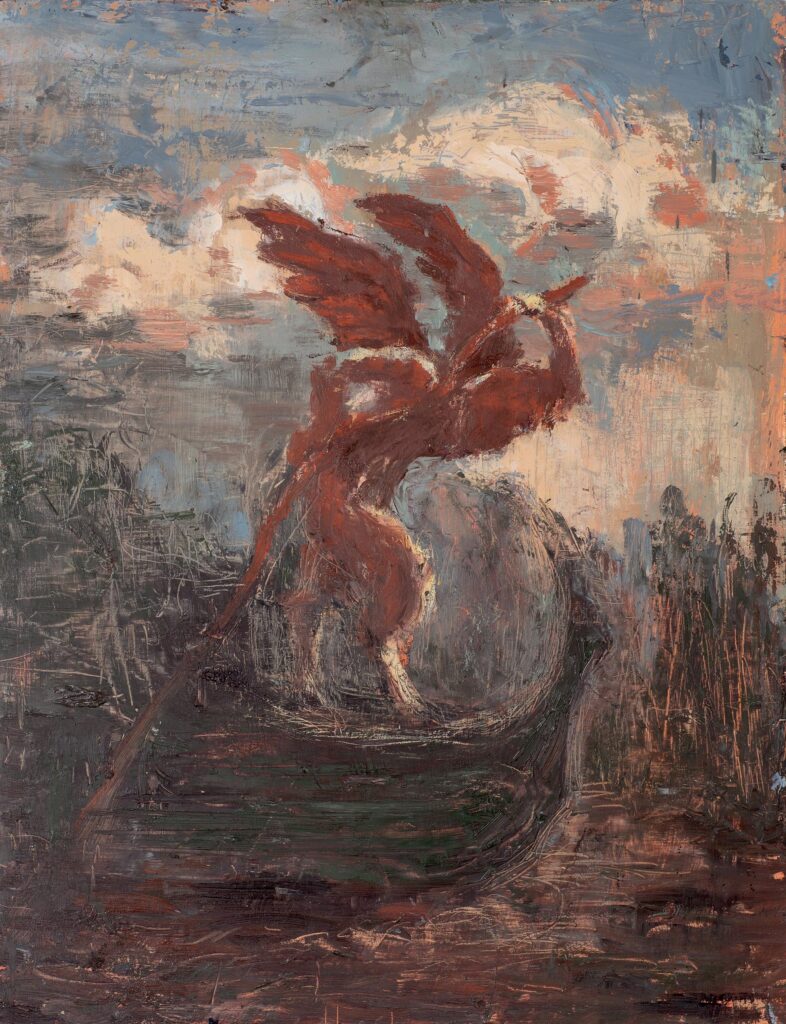

François Xavier Saint-Pierre’s art is in Venice for the first time in his personal exhibition The Spiders and the Bees, at Fondazione Marchesani from July 4 to 31.
Influenced by modernist painting and classical and romantic tropes, much of this art has been created during the artist’s residency at Villa Medici – French Academy, in Rome. The spiders and the bees in the title come from Jonathan Swift’s satire of similar name, written in 1704, which summarizes Swift’s mind on the Querelle des Anciens et des Modernes, a debate on how to look at history and artistic production that animated the European elite in the 1700s.
The fall (the pandemic) and rebirth (the redempti on of ideas and creativity). How does your art exemplify this in The Spiders and the Bees?
The pandemic was very much a catalyst in my decision to move to Venice in summer 2020. I had passed the first lockdown in Canada, where I’m from, and it was very disorienting. I was fortunate to have remained in good health, but all of my professional activity related to exhibiting was postponed indefinitely. Right after my move, we experienced the second lockdown, so I lived through the phase of an almost empty Venice and have witnessed the city coming back to life.
During the long months when everything was shut down, I was drawing and painting a lot and thinking about the detritus of culture, the persistence of historical tropes, pictorial traditions, and creative problems posed by the weight of history. These themes, together with ideas of renewal, resonate with my personal experience over the last few years and are also embodied in my exhibition on now in Venice, The Spiders and the Bees. It is my first Venetian exhibition and I’m interested to see how my work is perceived in this new context.

Old and modern, beauty and classicism, figurative and abstract, invention and originality — a philosophical contraposition that is fascinating. Where does your artistic research find its place between the universality of art and modern individuality?
My exhibition The Spiders and the Bees is inspired by the quarrel between the Ancients and the Moderns that originated in late 17th century France and went on to inform European artistic and political thought. It also continues my exploration of early Modernist painting idioms together with Classical and Romantic tropes. The title is a reference to Jonathan Swift’s satirical take on this quarrel, between those who valued tradition as the basis for artistic creation and those who favoured innovation and the new. In Swift’s telling, the two warring camps were portrayed as insects. He likened the Ancients to bees, who took from various flowers to create something beautiful and the Moderns to spiders who spun something new literally out of nothing. I reference this framework in order to navigate artistic forms and notions of progress and to examine the value of the present moment and the utility of the past and what we can learn from it. How do we endeavour to create meaning and structure in the present moment and address the value of history? (There are, however, no spiders or bees actually in the exhibition.)
I like the possibility that painting affords to remain ambiguous. I work from imagination and memory, and the result is forms that have little to no association with mediated imagery
What are the bases of your artistic thought?
A main motive for painting for me is to conceive of an image that is discrete and remarkable. I’m interested in ways of seeing that transcend the filters through which we often see the world. Monet is believed to have said that “in order to see, you must forget the name of the thing you are looking at.” And early 20th century French poet Stéphane Mallarmé said that “to name an object means to suppress three-quarters of the pleasure of a poem.” I like the possibility that painting affords to remain ambiguous.
I work from imagination and memory, and the result is forms that have little to no association with mediated imagery. In particular, I avoid traits of mediated imagery such as strong cropping and the exaggerated tonal contrasts particular to photographic sources.
Modern painting (painting created from approximately the early 18th to the late 20th century), was primarily preoccupied with an attempt to understand the self through an investigation into the processes of perception. The seriality in my work references this tradition. The repetition of a motif is a declaration of the indeterminacy inherent in our knowledge of objects and how they should look. No matter how familiar an object might be, its appearance is never fixed or predetermined.
I see my practice as a dialogue with specific painters and the history of painting. My work assimilates various pictorial influences, both historical and modern (from Chardin, to the Tiepolos, to Guston, Morandi, de Chirico and Savinio, among others), but at the same time, the act of painting for me represents a desire to surprise myself with some image that has never been seen before.